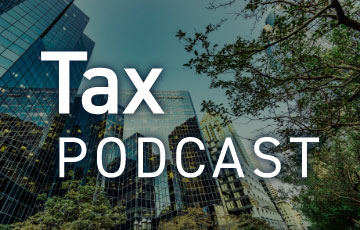Congressional Republicans are attempting to use the budget reconciliation process to pass a substantial fiscal package to address tax priorities, border security, defense funding and energy production.
The Purpose of Reconciliation
Budget reconciliation is a special process that allows for expedited consideration of certain types of legislation that address federal revenue, spending and the debt limit.
Reconciliation bills are particularly impactful in the Senate as they are not subject to the 60-vote filibuster threshold and impose restrictions on the types of amendments that can be offered. With only a simple majority vote required, reconciliation bills can be fast-tracked, providing the majority party with the ability to pass a bill without any support from the minority party.
The Reconciliation Process
.jpg/c8939e3c0fcc11f08dad8a8eab1b0cd0)
Budget reconciliation is a complicated process that contains two major stages: (1) the adoption of a budget resolution that contains reconciliation instructions and (2) the compilation and passage of a reconciliation bill that is consistent with the budget resolution.
Throughout the process, the House and Senate may disagree; however, both chambers must pass identical budget resolutions to begin the process and identical reconciliation bills to send it to the president for signature or veto.
Reconciliation Limitations
Reconciliation bills can only be used to make changes to spending, revenues or the debt limit. Congress can only pass one reconciliation bill per year for each of the three categories, although they can be bundled into one or two bills.
In the Senate, reconciliation bills are subject to the Byrd Rule, which limits the provisions that can be included to those with a primary effect on spending or revenue. To meet the criteria for inclusion, provisions must:
- Have a budgetary effect related to revenue or spending that is not considered “merely incidental”
- Originate from the committee with jurisdiction as outlined in the reconciliation instructions
- Increase or decrease revenues or spending by the amount specified in the budget resolution over the budget window
- Not increase the spending or decrease revenue outside the budget window (usually 10 years), or
- Not make changes to Social Security
The process of ensuring the bill is compliant is referred to as a “Byrd bath.” Senators may challenge provisions or amendments they believe to be extraneous by raising a point of order. In these instances, the Senate parliamentarian, a nonpartisan advisor in charge of interpreting Senate rules, will make a determination as to whether the provision in question violates the Byrd Rule.
Temporary Provisions
When utilizing the reconciliation process to comply with the budget resolution’s instructions, policymakers will occasionally enact provisions on a temporary basis. This practice leads to expiring provisions, as was the case with many of the Tax Cuts and Jobs Act’s (TCJA) individual and pass-through provisions.
Examples of Reconciliation
Congress has passed 27 reconciliation bills, 23 of which were signed into law, since the process was established. Prominent reconciliation bills include:
- The Economic Growth and Tax Relief Reconciliation Act of 2001 (the Bush Tax Cuts)
- The Health Care and Education Reconciliation Act of 2010 (including the Affordable Care Act or ACA)
- The Tax Cuts and Jobs Act of 2017
- The American Rescue Plan Act (ARPA) of 2021
- The Inflation Reduction Act (IRA) of 2022
Reconciliation Expected in 2025
With control of both chambers of Congress and the presidency, Republicans intend to use budget reconciliation to enact much of President Donald Trump’s fiscal agenda, including the extension of many expiring TCJA provisions.
Although Republicans are generally aligned in their policy goals, crafting a reconciliation bill can be an arduous task. The substantial cost of extending the TCJA and enacting many of Trump’s other tax priorities, coupled with the ballooning national debt, is further complicating Republican negotiations.
Despite the challenges and difficult decisions ahead, we anticipate Republicans passing their landmark tax reform bill before the end of the calendar year. Stay tuned for developments and tax policy insights.
Your Guide Forward
To learn more about how these changes could impact you or your business, reach out to a knowledgeable Cherry Bekaert tax advisor.






